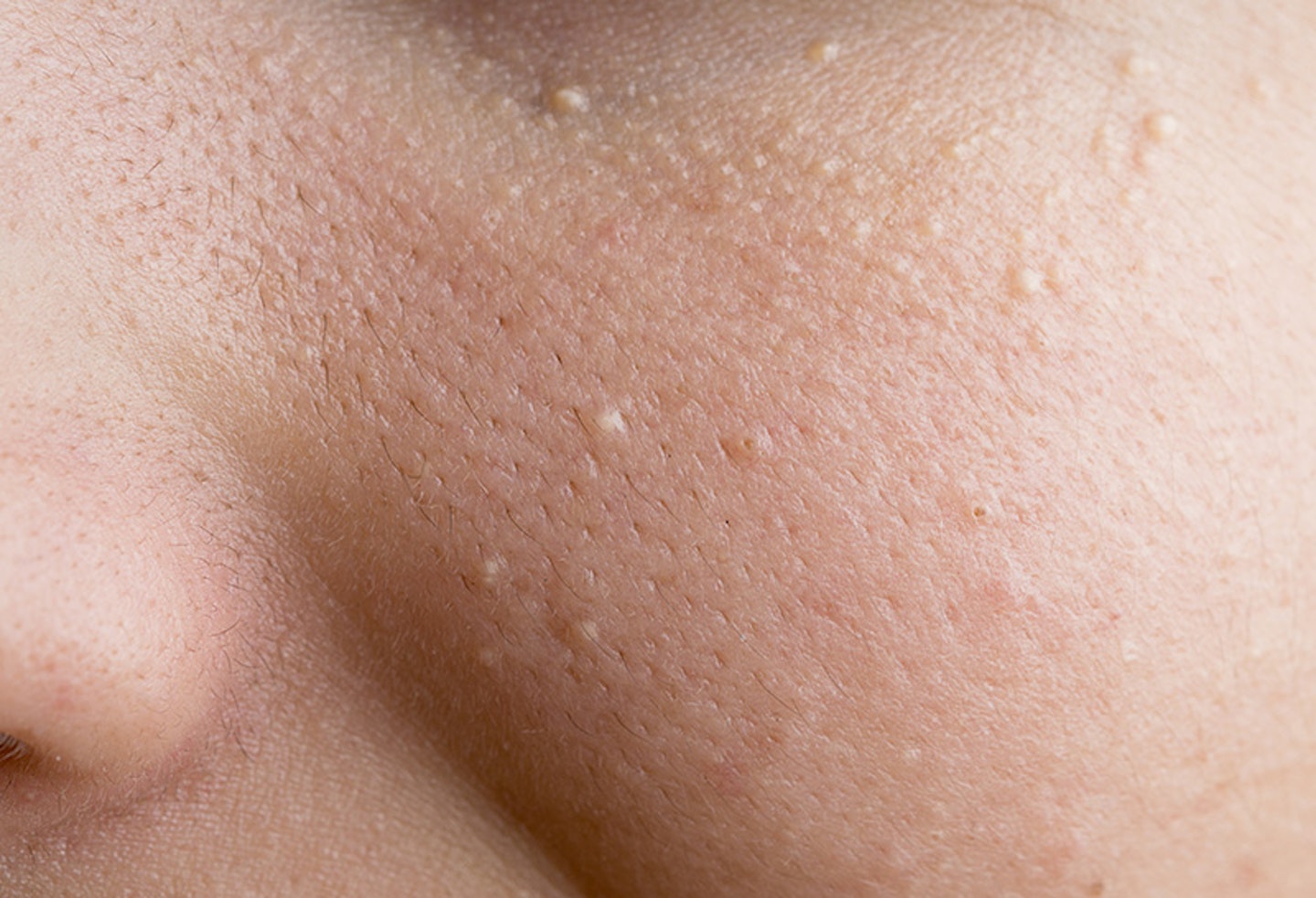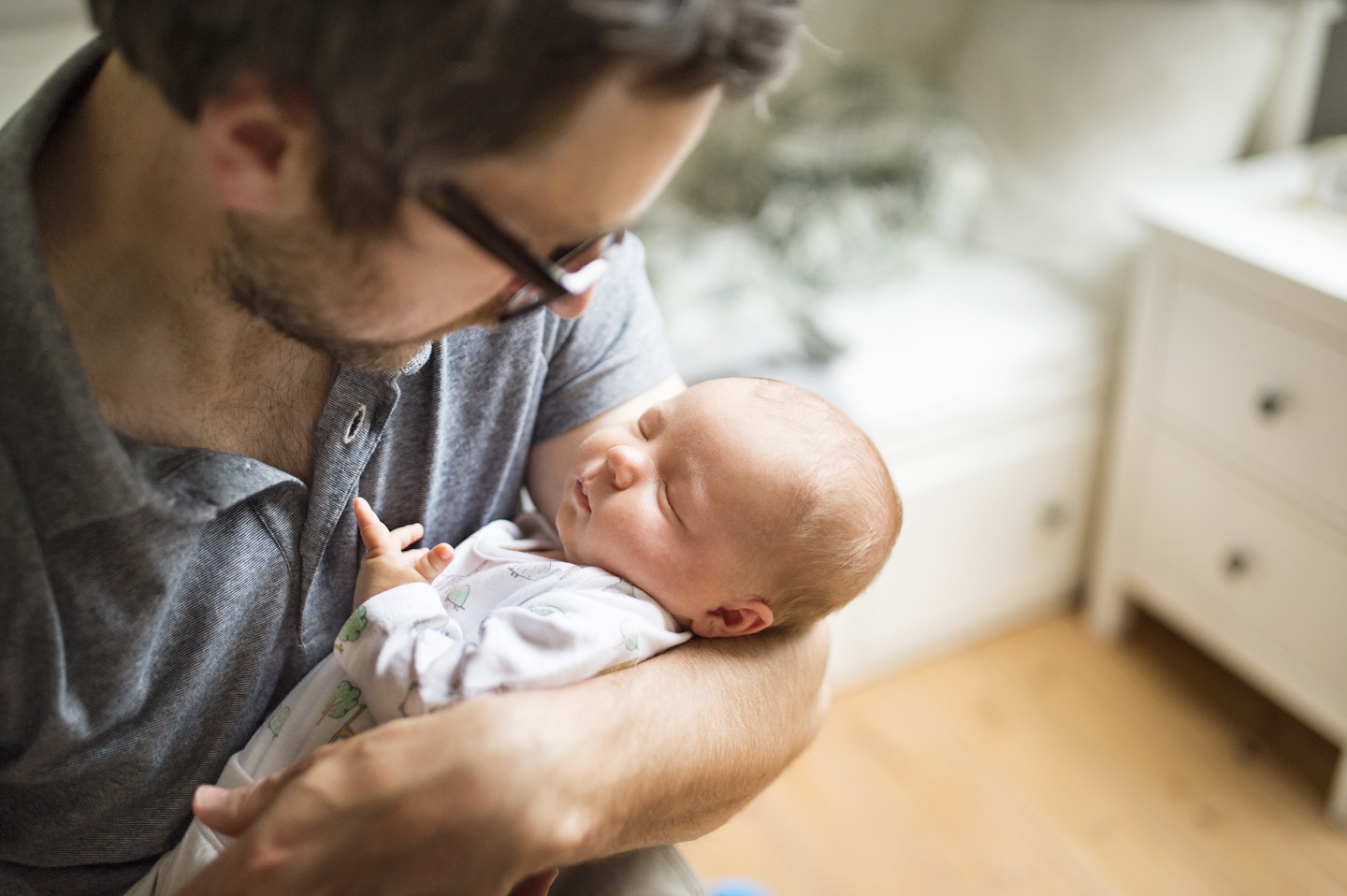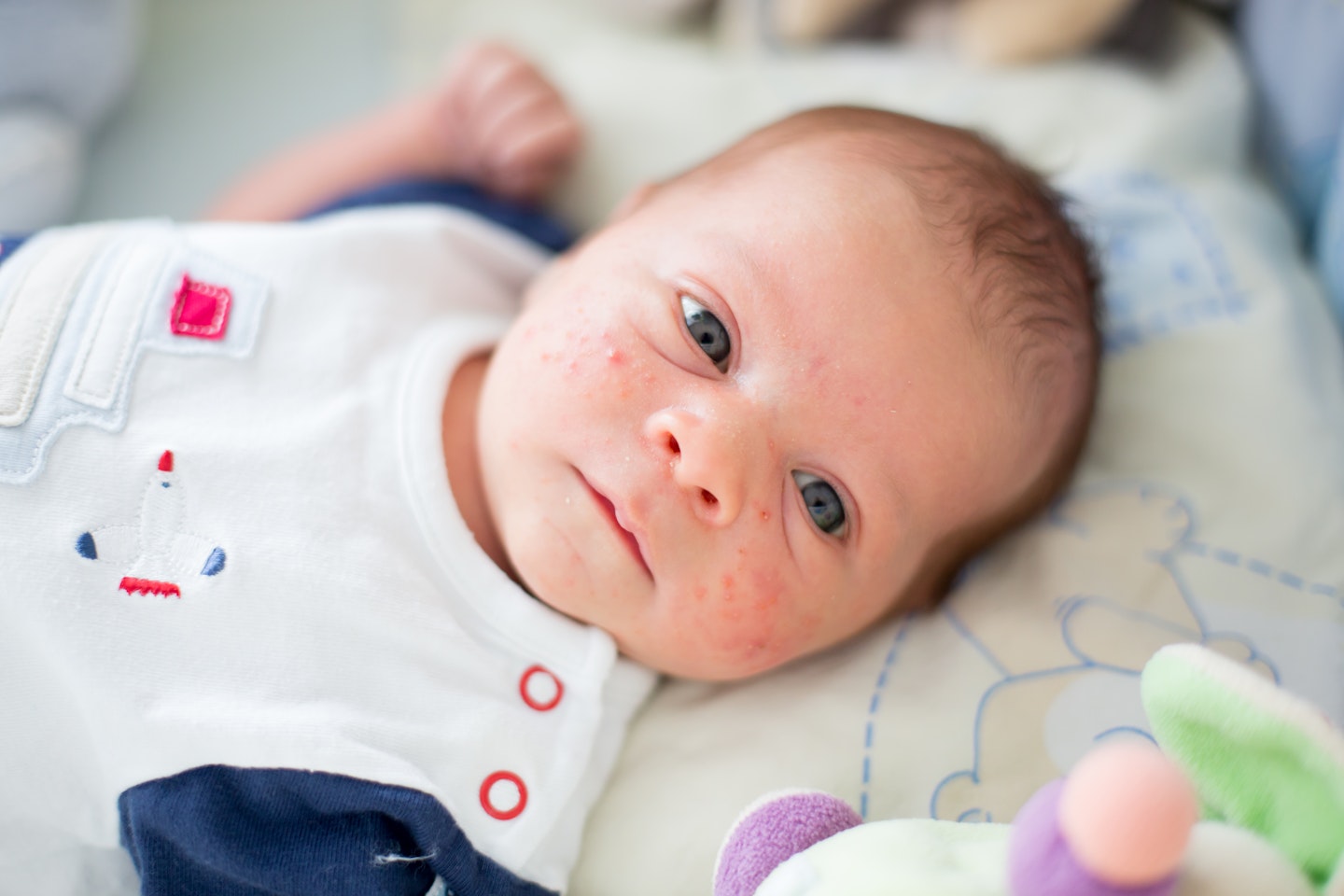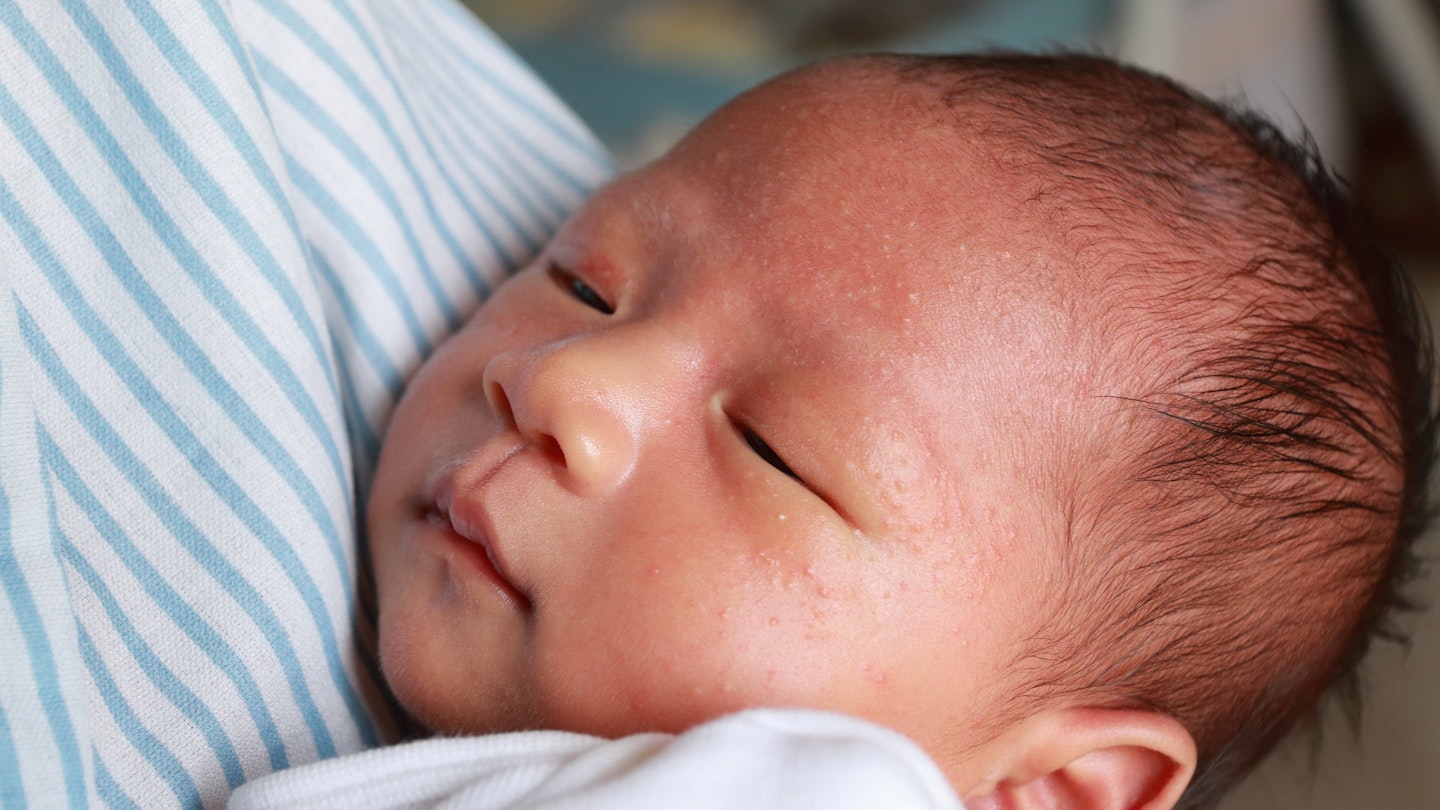Milk spots, otherwise known as milia, are fairly common in babies, affecting around half of all newborns. While they are a common concern, it's normal for parents to mistake them for something else, so it's important to know what you're looking for.
We spoke to Dr Yiannis Ioannou, Consultant Paediatrician at The Portland Hospital, part of HCA Healthcare UK to find out everything you need to know about baby milk spots.
What are baby milk spots?
Milk spots are very small white spots or lumps that occur on the face, mainly around the eyes, nose, cheeks, and forehead (so basically everywhere on their poor little face!).
"Baby milk spots 'Milia' are tiny cysts that some babies will develop over time, and others are born with. They are a common skin issue that a lot of babies will experience, these tiny milk spots are benign and not a cause for concern for parents." Says Dr Yiannis.
They are actually tiny little sacs filled with keratin, which is a protein that is typically found in skin tissue, hair and nail cells. The good news is they're completely harmless and only cause short term cosmetic changes.
There are various different types of milia to be aware of:
Neonatal milia: Affecting infants only causing white cysts to form on baby’s skin from birth, most commonly around their nose.
Primary milia: Mostly found on eyelids, forehead, cheeks or genitals affecting both children and adults.
Secondary milia (traumatic milia): These are a result of skin damage, either from burns, rashes, allergic reactions, blisters or too much exposure to sunlight.
Juvenile milia: A form of milia that's inherited which can be present at birth or show up later in life.
How common are newborn baby milk spots?
Milk spots can occur in both adults and children but they have different causes and they are particularly common in newborns, with around 40 per cent of babies developing them.
What do milk spots look like on babies?
Milk spots are tiny spots which are white or yellow in colour. They're typically less than a millimetre in size, so are very tiny. Your youngster may have only a few or they could have lots clustered together. Most importantly, they won't cause any pain or discomfort to your little one.

What causes milk spots?
When it comes to skin complaints like nappy rash, the clue is in the name, but contrary to what the name suggests, milk spots have nothing to do with milk, bottle feeding or breastfeeding.
According to Dr Yiannis, "Milk spots occur due to blocked pores, not as a result of breastfeeding which is a common misconception. They are small cysts that usually have keratin in, a protein that is found in our skin."
Some dermatologists believe they occur due to the hormones released by the mother during pregnancy or down to the baby's skin glands not being fully developed.
In adults, milk spots are usually down to dead skin build-up, damage to the skin via the sun, the use of steroid creams or burns.

Should I be worried about baby milk spots?
Unlike baby eczema or chicken pox, milk spots are harmless. It is unlikely that the milk spots cause your little one to lose any sleep (no more than normal anyway!) because they are not usually painful or itchy.
If you find they are causing them discomfort, they may be something else so you can always get your GP or health visitor to check.
"Milk spots are nothing to be worried about, they will clear up on their own in a matter of weeks, if not months. A lot of babies will either be born with milk spots or develop them and they do not cause pain or discomfort." Says Dr Yiannis.
Are milk spots contagious?
No, they aren't contagious so you don't need to worry about them spreading.
How long do milk spots last on babies?
"Milk spots will resolve themselves within a few weeks or months as your baby grows” says Dr Yiannis.
“But if you’re unsure whether these are milk spots and they have been there for longer than a few weeks or months, then it would be best to consult your paediatrician for reassurance."
How do you treat baby milk spots?
“You can continue to wash your baby's face with water, followed by a gentle baby moisturiser. Although milk spots might look like little whiteheads, make sure you are not tempted to squeeze or pop them," says Dr Yiannis.
The keratin cannot be released through the pore so this will only break their delicate skin, leaving it sore and prone to infection.
Keep their skin clean with water and any mild baby washes. The milk spots will clear up on their own in a few weeks.
Can you put breast milk on milk spots?
Breast milk has many brilliant uses, but treating baby milk spots isn't one of them. While a cotton pad of breast milk might help soothe any baby acne, it has no affect on milk spots so save your precious milk for feeding time.
Are newborn baby milk spots the same as baby acne?
Milk spots are often inaccurately referred to as baby acne. However, there is a subtle difference between the two.
Dr Yiannis says, "Baby milk spots have the appearance of tiny bumps with no head. However, baby acne is different as these are usually in the form of red angry looking spots, or a spot which has a head to it. Acne also tends to develop after a baby is born, whereas babies can be born with milk spots. These spots can become infected, but are easily treated with the right creams or ointments and if you are concerned you should consult a paediatrician who can help advise you on the best course of action."

Luckily, like milk spots, acne tends to clear up on its own after a few weeks or months.
Avoid squeezing them, over washing and make sure to use mild baby products. If the acne is severe, contact a dermatologist.
